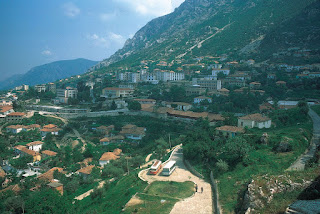caravan
This blog is related to the visiting places in India.
Monday, 9 December 2024
Albania
Monday, 27 May 2024
Uttrakhand
Uttrakhand
Located at the foothills of the Himalayan mountain ranges, it is largely a hilly State, having international boundaries with China (Tibet) in the north and Nepal in the east Uttarakhand was formed on the 9th November 2000 as the 27th State of India, when it was carved out of northern Uttar Pradesh. The state is divided into two divisions, Garhwal and
Etymology
History
The Pitons, St. Lucia
The Pitons, St. Lucia
Petit Piton is 743 m (2,438 ft) high and Gros Piton is 798.25 m (2,618.9 ft) high; they are linked by the Piton Mitan RIDEG. IN the near the town of souafrica. The Pitons are located on either side of Jalousie Bay. The Pitons are located between the towns of Soufrière and Choiseul on the southwestern coast of the island in the electoral districts of three and ten.
Flora and fauna
In popular culture
Lapland, Finland
Lapland, Finland
on the shore of the Bay of Bothnia of the top of Finland is more than 500 kilometres on the shore at the southernmost municipality of Lapland. shore of the Bay of Bothnia.
.
Geography
Climate
History
Monday, 13 May 2024
Oshino Hakkai, Oshino, Yamanashi, Japan
Oshino Hakkai, Oshino, Yamanashi, Japan
The ponds were originally known as the
That vista is the striking “Diamond Fuji” phenomenon, which can only be seen from certain places setting sun aligns perfectly with the peak of Mt.in the sun of the caldera as the Fuji. it is even take some home in a bottle in the water in the Waku Pond is especially clear and clean, and visitors are encouraged to drink..
Hannoki Bayashi Shiryokan
don't miss taking a walk along the nearby cherry tree-lined river with views of the blossoms in combination with Mount Fuji in a few days later than around Lake Kawaguchiko). a Fujikko tourist buses also make in the a stop at Oshino Hakkai in Further.
the village of goverment at the one public elementary school and one public in junior high school operated.
. a village has not high school. The density of 391,8 persons per km2 in total area of the village is 25.05 square kilometres
. In the humid summers and hot in winters relatively mild. . The average annual rainfall is 1804 mm with September as the wettest month While you enjoy those, you can take in the gorgeous views of Mount Fuji, whether you're there in time for fall foliage or cherry blossoms.
which can only be seen from certain places due to the position of the Earth. The water in the Waku Pond is especially clear and clean, and visitors are encouraged to drink it and even take some home in a bottle
Albania
Albania in southern Europe , located in the western part of the Balkan Peninsula on the Strait of Otranto, the southern ...

-
Albania in southern Europe , located in the western part of the Balkan Peninsula on the Strait of Otranto, the southern ...
-
VRINDAVAN VRINDAVAN IS A CITY IN INDIA, LOCATED IN THE STATE OF UTTERPRADESH . IT IS SITUATED ON THE WEST BANK O...
-
PATNA- SAHIB- GURUDVARA GURU gobind sing the tenth sikh guru was born in patna mughal empire on 22 december 1666. Spent some time before ...













